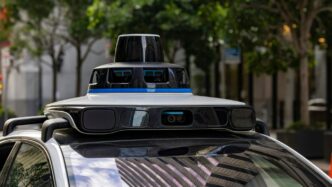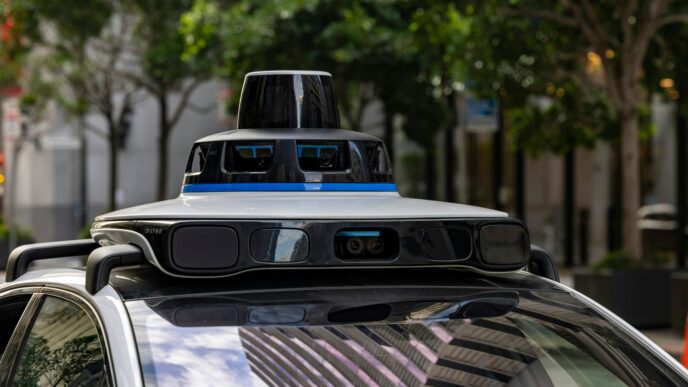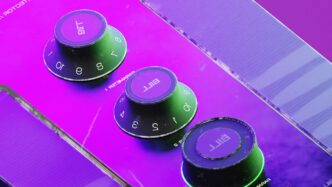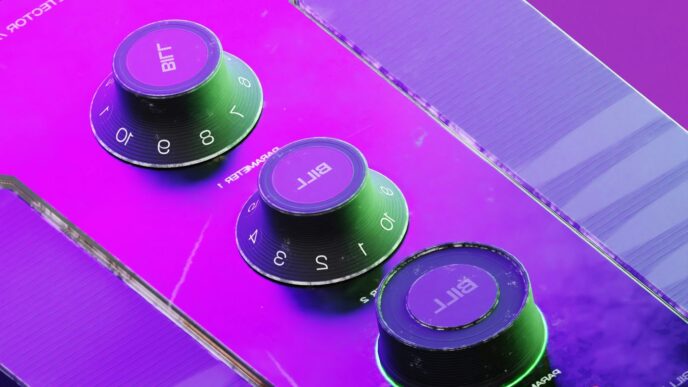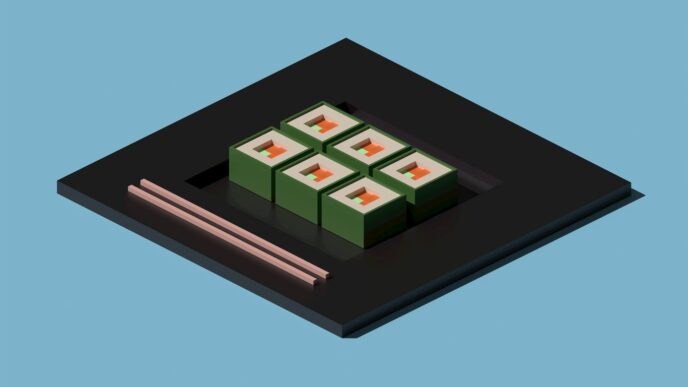Digital twins are changing the way industries operate by creating virtual versions of real-world systems. These digital replicas allow companies to monitor, analyze, and predict how their physical counterparts will behave. This article will explore the many ways digital twins are being used in various fields, from manufacturing to healthcare, and the challenges and benefits that come with this innovative technology.
Key Takeaways
- Digital twins are virtual copies of real-world objects or systems that help in monitoring and analysis.
- They are used in many industries, including manufacturing, healthcare, and smart cities.
- Digital twins can improve efficiency and save costs by predicting issues before they happen.
- Real-time data is crucial for keeping digital twins updated and accurate.
- The future of digital twins includes exciting technologies like AI and virtual reality.
Understanding Digital Twins
Definition and Key Characteristics
A digital twin is a virtual version of a real-world object, system, or process. It’s not just a simple model; it’s a dynamic representation that changes as the physical object does. Here are some key features of digital twins:
- Real-time data integration: They constantly update with new information.
- Two-way communication: Changes in the physical object are reflected in the digital twin and vice versa.
- Predictive capabilities: They can forecast future conditions based on current data.
Historical Evolution
The idea of digital twins started in 2002 when Dr. Michael Grieves introduced it. Over the years, advancements in technology, especially in IoT and big data, have made digital twins a reality in many industries. They have evolved from a concept to a crucial tool in sectors like manufacturing and healthcare.
Core Components
Digital twins consist of several important parts:
- Data Collection: Sensors gather real-time data from the physical object.
- Simulation: They use this data to create accurate models of the object’s behavior.
- Analytics: Advanced algorithms analyze the data to provide insights.
Digital twins are changing how industries operate by providing deeper insights and improving decision-making.
In summary, digital twins are powerful tools that help industries optimize their processes and improve efficiency. They represent a significant step forward in how we understand and manage physical systems.
How Digital Twins Work
Data Collection and Integration
Digital twins rely on real-time data to function effectively. This data is collected through various sources, including:
- Sensors: Devices that monitor physical conditions.
- IoT Devices: Internet-connected devices that gather and transmit data.
- User Inputs: Information provided by users to enhance the model.
Once collected, this data is integrated into the digital twin, ensuring that the virtual model reflects the current state of its physical counterpart.
Simulation and Analysis
After data integration, the next step involves simulation and analysis. This process includes:
- Modeling: Creating a virtual representation of the physical object.
- Predictive Analytics: Using algorithms to forecast future behaviors and outcomes.
- Scenario Testing: Running simulations to see how changes affect performance.
These simulations help in understanding how the physical object will behave under different conditions.
Feedback Loop
A crucial aspect of digital twins is the feedback loop. This loop works as follows:
- Actions taken in the physical world are monitored.
- Changes are sent back to the digital twin.
- The digital twin updates itself based on this new information.
This continuous cycle allows for ongoing optimization and improvement of the physical system, making digital twins a powerful tool in various industries.
Digital twins create a dynamic connection between the physical and digital worlds, enabling better decision-making and efficiency.
In summary, digital twins work by collecting data, simulating scenarios, and creating a feedback loop that enhances both the virtual and physical systems. This technology is transforming how industries operate, leading to improved efficiency and innovation.
Applications of Digital Twins in Manufacturing
Digital twins are transforming the manufacturing industry by providing innovative solutions that enhance productivity and efficiency. These virtual models allow manufacturers to simulate real-world processes, leading to better decision-making and operational improvements.
Predictive Maintenance
- Digital twins can forecast when machines are likely to fail, enabling timely maintenance.
- This proactive approach helps avoid unexpected breakdowns and reduces downtime.
- By analyzing data, manufacturers can extend the lifespan of their equipment.
Process Optimization
- Manufacturers can use digital twins to test various scenarios and find the best production methods.
- This leads to smoother operations and higher output.
- Simulations help identify bottlenecks and inefficiencies in the production line.
Quality Control
- Digital twins assist in spotting potential quality issues before they affect the final product.
- By monitoring processes in real-time, manufacturers can ensure consistent quality.
- This capability reduces waste and enhances customer satisfaction.
Digital twins are not just about creating a virtual model; they are about using real-time data to make informed decisions that drive success in manufacturing.
| Application | Benefits |
|---|---|
| Predictive Maintenance | Reduces downtime, extends equipment life |
| Process Optimization | Increases efficiency, reduces costs |
| Quality Control | Enhances product quality, minimizes waste |
In summary, the applications of digital twins in manufacturing are vast and impactful, paving the way for a more efficient and innovative industry.
Digital Twins in Healthcare
Patient-Specific Models
Digital twins can create personalized models for patients, allowing doctors to simulate treatment outcomes. This means that healthcare providers can tailor therapies to individual needs, improving the chances of successful treatment. For example:
- Simulating drug responses to find the best medication.
- Predicting recovery times based on individual health data.
- Testing different treatment plans before applying them.
Medical Device Design
In the design of medical devices, digital twins play a crucial role. By simulating how devices perform in virtual patients, developers can:
- Identify potential issues before physical testing.
- Enhance safety by refining designs based on simulations.
- Accelerate development timelines, getting devices to market faster.
Virtual Surgery Simulations
Digital twins also allow for virtual surgery simulations, which can:
- Train surgeons in a risk-free environment.
- Test surgical techniques on digital models of patients.
- Improve patient outcomes by practicing complex procedures beforehand.
Digital twins in healthcare are revolutionizing how we approach treatment and device design, making processes safer and more efficient.
| Application | Benefits |
|---|---|
| Patient-Specific Models | Tailored therapies, improved outcomes |
| Medical Device Design | Enhanced safety, faster development |
| Virtual Surgery Simulations | Better training, improved patient care |
Role of Digital Twins in Smart Cities
Digital twins are changing how cities operate by creating virtual models of urban environments. These models help city planners and managers make better decisions. Here are some key areas where digital twins play a crucial role:
Urban Planning
- Traffic Flow Optimization: Digital twins can simulate traffic patterns to improve road designs.
- Energy Usage: They help in planning energy-efficient buildings and infrastructure.
- Infrastructure Development: Planners can visualize how new projects will fit into existing environments.
Traffic Management
- Real-Time Monitoring: Digital twins allow for constant updates on traffic conditions.
- Accident Prevention: By analyzing data, cities can identify high-risk areas and take action.
- Public Transport Optimization: They help in scheduling and routing public transport more effectively.
Disaster Response
- Scenario Simulation: Cities can prepare for disasters by simulating various emergency situations.
- Resource Allocation: Digital twins help in planning where to send resources during a crisis.
- Community Safety: They enhance safety measures by predicting potential hazards.
Digital twins are not just about technology; they are about creating smarter, safer, and more efficient cities for everyone.
In summary, digital twins are essential for modern urban management, providing insights that lead to better planning, efficient traffic systems, and effective disaster responses. Their ability to simulate real-world scenarios makes them invaluable in creating sustainable and resilient cities.
Digital Twins in Aerospace
Aircraft Component Monitoring
Digital twins are crucial in monitoring aircraft components. They allow engineers to track the health of parts in real-time. This helps in:
- Predicting failures before they happen.
- Scheduling maintenance efficiently.
- Reducing unexpected downtime.
Performance Optimization
Using digital twins, aerospace companies can optimize performance. They can simulate different scenarios to find the best configurations. This includes:
- Testing various designs virtually.
- Analyzing aerodynamic efficiency.
- Identifying weight-saving opportunities.
Fuel Efficiency
Digital twins also play a significant role in improving fuel efficiency. By simulating flight conditions, companies can:
- Optimize fuel consumption.
- Reduce operational costs.
- Enhance overall aircraft performance.
Digital twins are transforming the aerospace industry by providing insights that lead to better designs and operational efficiency.
In summary, digital twins in aerospace help in monitoring components, optimizing performance, and improving fuel efficiency, making them essential for modern aviation.
Benefits of Digital Twins
Improved Efficiency
Digital twins can greatly enhance operational efficiency by pinpointing inefficiencies and streamlining processes. This leads to smoother operations and better resource management.
Cost Savings
By utilizing predictive maintenance and optimizing operations, businesses can achieve significant cost savings over time. Here’s a quick look at how digital twins contribute to financial benefits:
| Benefit Type | Description |
|---|---|
| Predictive Maintenance | Reduces unexpected downtime and repair costs |
| Process Optimization | Enhances productivity and reduces waste |
| Resource Management | Improves allocation of materials and labor |
Enhanced Innovation
Digital twins foster enhanced innovation by allowing rapid testing and prototyping of new ideas without the risks associated with physical trials. This encourages creativity and faster development cycles.
Better Decision-Making
With real-time data and predictive analytics, organizations can make more informed decisions. This leads to:
- Improved strategic planning
- Faster response to market changes
- Enhanced customer satisfaction
Increased Safety
Digital twins can identify potential issues before they arise, leading to increased safety in various applications. This proactive approach helps in:
- Reducing workplace accidents
- Enhancing product reliability
- Ensuring compliance with safety regulations
Digital twins are not just about technology; they represent a shift towards smarter, more efficient operations that can transform industries.
Personalization
In sectors like healthcare, digital twins enable more personalized experiences. They allow for tailored solutions that meet individual needs, improving outcomes and satisfaction.
Challenges in Implementing Digital Twins
While digital twins offer many advantages, there are several challenges that organizations face when trying to implement them effectively.
Data Quality and Integration
- Ensuring that data is accurate and up-to-date can be difficult.
- Integrating data from various sources requires careful planning and execution.
- Poor data quality can lead to incorrect simulations and decisions.
Security Concerns
- The large amount of data involved raises cybersecurity issues.
- Protecting sensitive information is crucial, especially with interconnected devices.
- Organizations must invest in robust security measures to safeguard their data.
Skill Gap
- Many companies lack the specialized skills needed to develop and manage digital twins.
- Training existing staff or hiring new talent can be time-consuming and costly.
- Bridging this skill gap is essential for successful implementation.
Implementing digital twins is not just a technical challenge; it requires a shift in mindset and processes within the organization.
Summary of Challenges
| Challenge | Description |
|---|---|
| Data Quality and Integration | Ensuring accurate, real-time data integration can be complex. |
| Security Concerns | Protecting sensitive data from cyber threats is essential. |
| Skill Gap | Organizations may lack the necessary expertise to manage digital twins. |
Future Trends in Digital Twin Technology
As we look ahead, the world of digital twins is set to evolve significantly. New technologies will enhance their capabilities and applications across various sectors. Here are some key trends to watch:
AI and Machine Learning Integration
- Digital twins will increasingly incorporate AI and machine learning to:
- Analyze large datasets more effectively.
- Predict outcomes with greater accuracy.
- Optimize performance autonomously.
Extended Reality (XR) Integration
- The use of augmented reality (AR) and virtual reality (VR) will improve how users interact with digital twins. This will allow:
- Enhanced visualization of complex data.
- More immersive training and simulation experiences.
- Better collaboration among teams.
Quantum Computing
- Quantum computing holds the potential to revolutionize digital twins by:
- Enabling faster processing of complex simulations.
- Allowing for more detailed modeling of systems.
- Providing insights that were previously unattainable.
The future of digital twins is bright, with advancements promising to make them even more powerful and useful in various industries.
In summary, as digital twin technology continues to advance, we can expect to see significant improvements in efficiency, collaboration, and innovation across many fields. The integration of AI, XR, and quantum computing will play a crucial role in shaping this future, making digital twins an essential tool for modern industry.
Digital Twins in Product Development
Accelerating Development Processes
Digital twins are changing how products are developed. These virtual models can speed up the entire process. By creating a digital version of a product, teams can test and modify designs without needing physical prototypes. This means:
- Faster testing: Changes can be made quickly in a virtual space.
- Cost savings: Fewer physical prototypes are needed, which cuts down on expenses.
- Better quality: Products often have fewer issues when they reach the market.
Enhancing Collaboration
Using digital twins also helps teams work together better. They allow:
- Real-time updates: Everyone can see changes as they happen.
- Shared insights: Different departments can contribute their expertise.
- Customer feedback: Companies can involve customers early in the design process.
Case Studies
Many companies are already seeing the benefits of digital twins. For example:
- A manufacturing firm reduced development time by 30%.
- An automotive company improved product quality, leading to a 5% increase in sales.
- A tech startup used digital twins to create a new gadget, cutting costs by 40%.
Digital twins are not just a trend; they are a powerful tool that can reshape product development.
In summary, digital twins are revolutionizing product development by making processes faster, cheaper, and more collaborative. As more companies adopt this technology, we can expect even greater innovations in the future.
Bridging the Physical and Digital Worlds

Digital twins act as a crucial link between physical objects and their virtual versions. They create a digital copy that mirrors the real-world item, allowing for better understanding and management. This connection is essential for various industries, enabling them to optimize processes and enhance performance.
Real-Time Data Synchronization
Real-time data synchronization is vital for keeping digital twins accurate. By using IoT sensors, data is continuously collected from physical objects. This ensures that the digital twin reflects the latest changes and conditions. Here are some key points about its importance:
- Immediate updates: Changes in the physical object are instantly reflected in the digital twin.
- Proactive monitoring: Stakeholders can respond quickly to any issues that arise.
- Enhanced efficiency: Continuous data flow helps in minimizing downtime and maximizing productivity.
Role of IoT Sensors and Data Analytics
IoT sensors and data analytics play a significant role in maintaining digital twins. They help in:
- Collecting data: Sensors gather information about the physical object’s performance.
- Analyzing trends: Data analytics tools identify patterns and predict future behavior.
- Improving decision-making: Insights gained from data help stakeholders make informed choices.
Digital twins are not just static models; they evolve with real-time data, providing valuable insights that drive innovation and efficiency.
In summary, the integration of digital twins with real-time data and IoT technology is transforming how industries operate, making them more responsive and efficient.
Digital Twins and Remote Collaboration
Virtual Reality Integration
Digital twins are changing how teams work together, especially when they are not in the same place. Using virtual reality (VR), people can step into a digital version of a factory or a project. This allows them to see and interact with the model as if they were there in person. Here are some benefits of using VR with digital twins:
- Enhanced visualization of complex systems.
- Improved training for new employees.
- Real-time collaboration on design and problem-solving.
Augmented Reality Applications
Augmented reality (AR) adds digital elements to the real world. When combined with digital twins, AR can help workers see important data overlaid on physical objects. This can be useful in many ways:
- Guiding maintenance tasks with step-by-step instructions.
- Visualizing changes in real-time during construction.
- Improving safety by highlighting hazards.
Mixed Reality Solutions
Mixed reality (MR) combines both VR and AR, allowing users to interact with both the digital and physical worlds. This technology can:
- Create immersive training environments.
- Allow teams to collaborate on designs from anywhere.
- Enable remote troubleshooting by sharing a digital view of the problem.
Digital twins, when paired with remote collaboration tools, can lead to greater efficiency and better decision-making. This technology helps teams work together, no matter where they are located, making it easier to solve problems and innovate.
By integrating these technologies, businesses can enhance their operations and foster a more connected workforce.
Conclusion
In conclusion, digital twins are changing how industries operate by creating virtual versions of real-world systems. These digital models help companies make better decisions by using real-time data to predict future outcomes. As technology advances, we can expect digital twins to become even more common, especially when combined with tools like virtual reality and augmented reality. This combination will allow teams to work together more effectively, even from far away. Overall, digital twins not only improve efficiency and reduce costs but also open up new possibilities for innovation across various fields.








